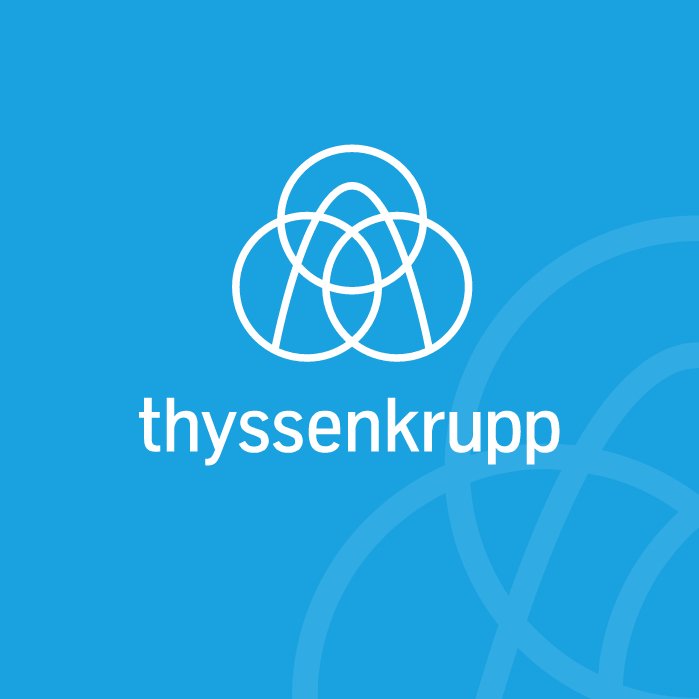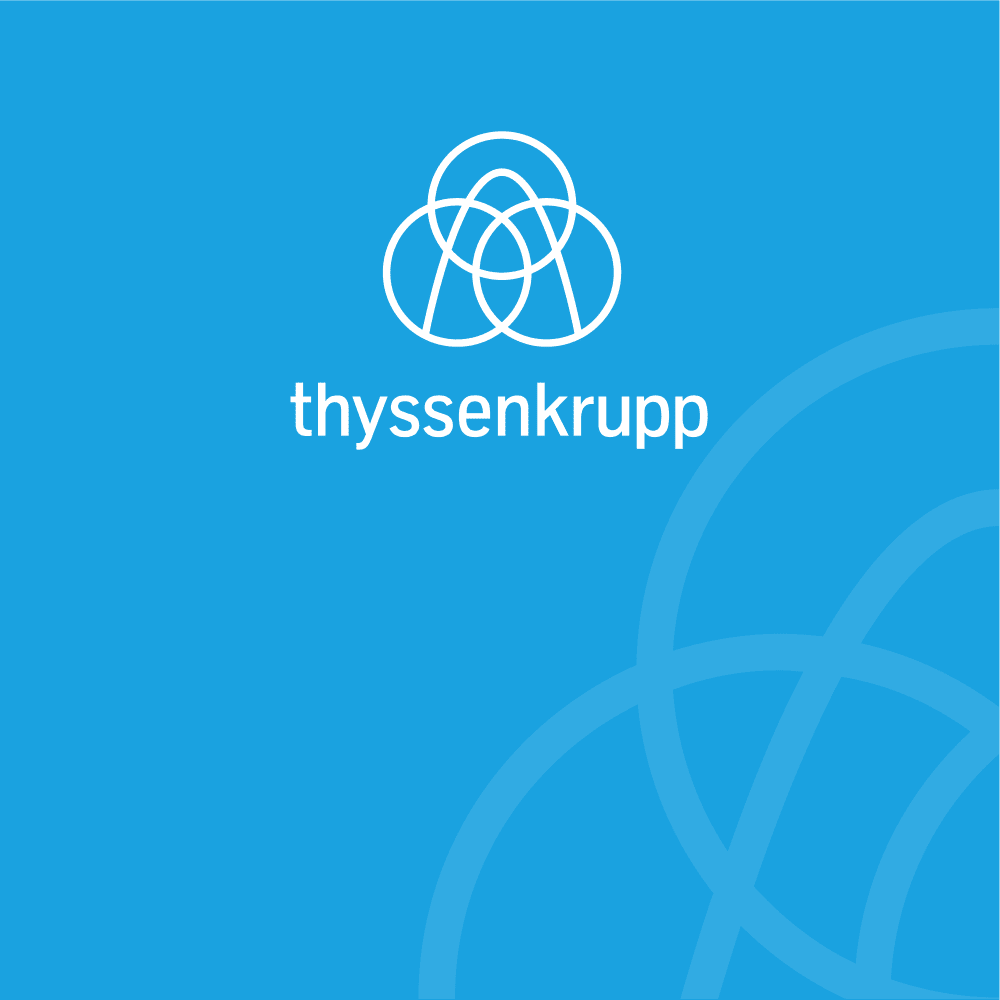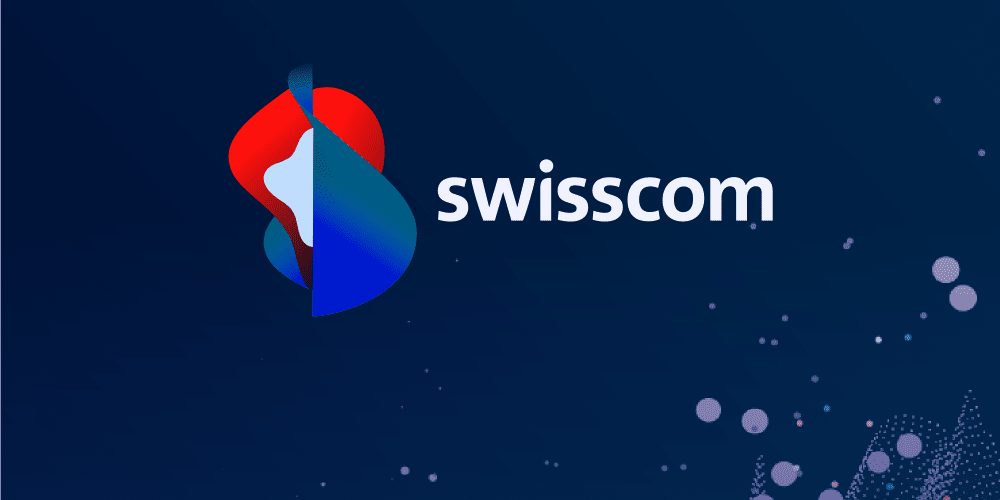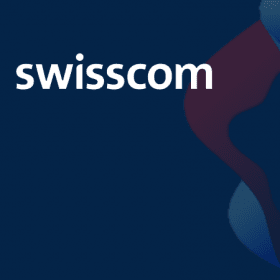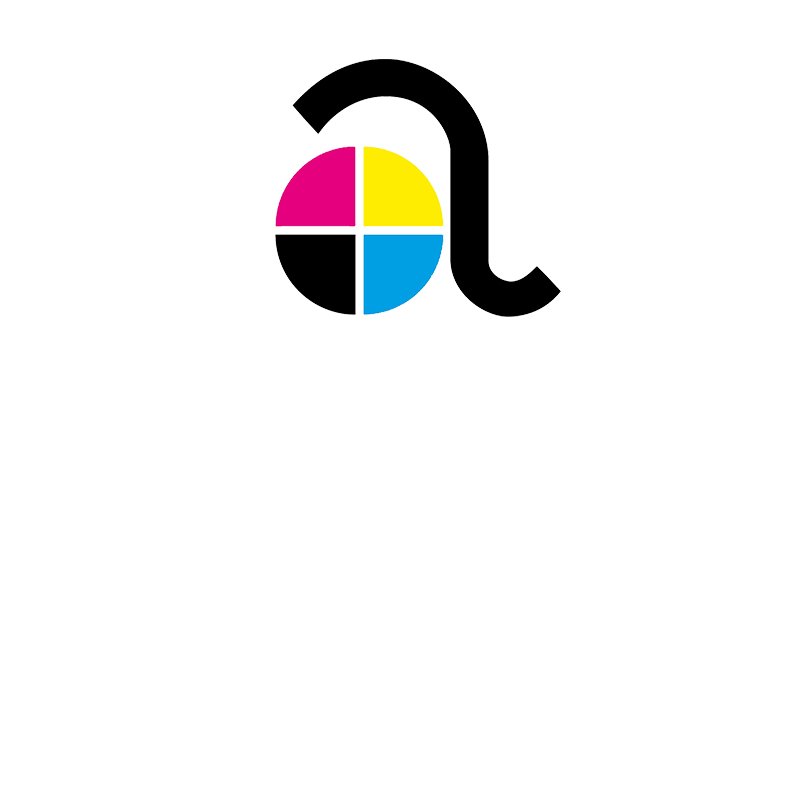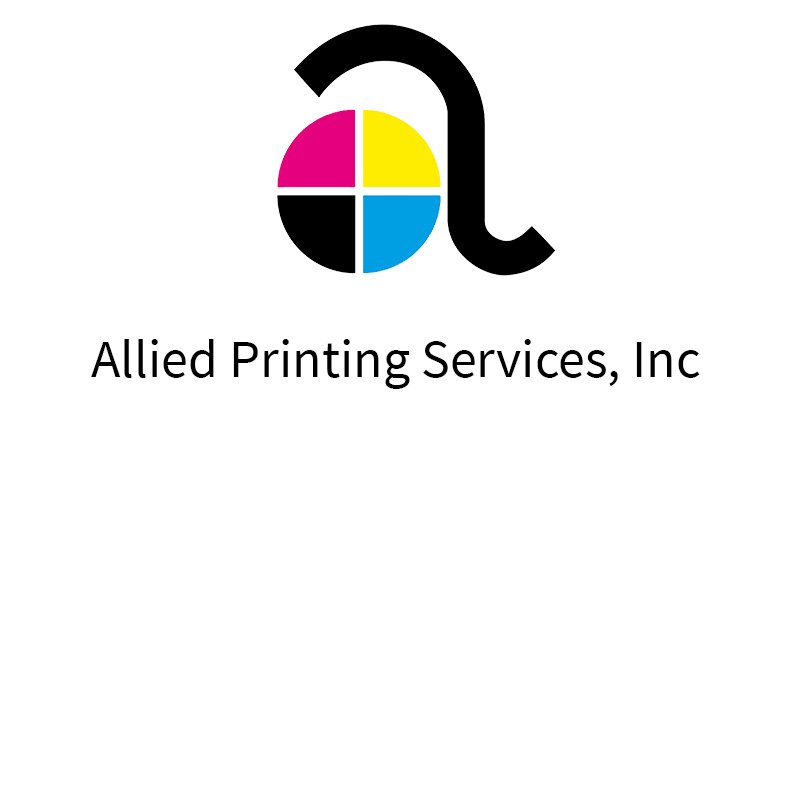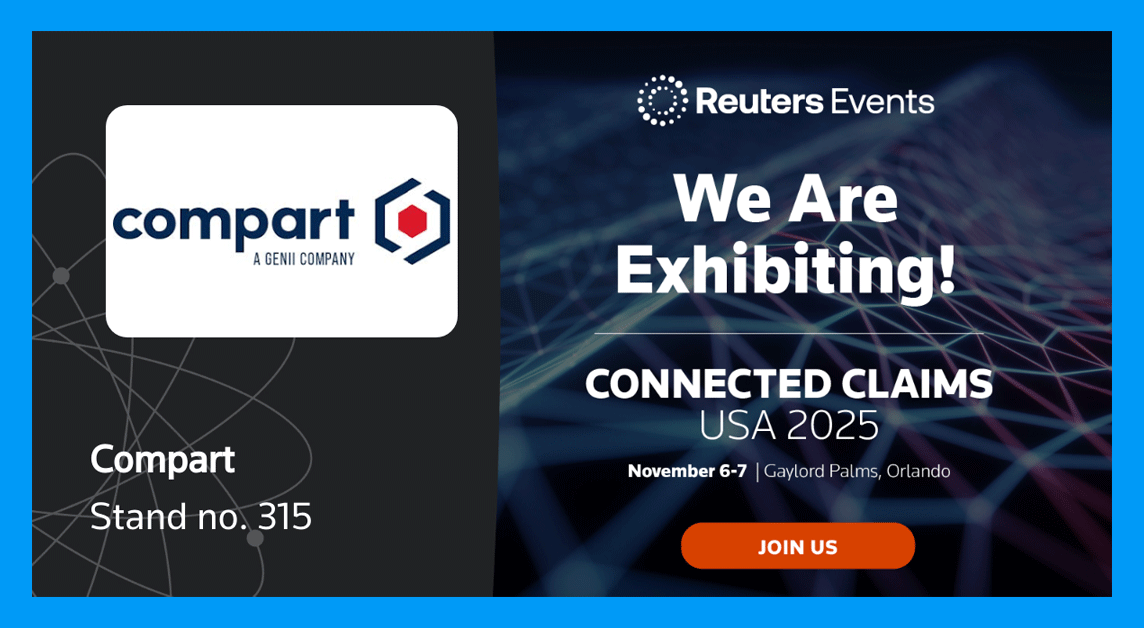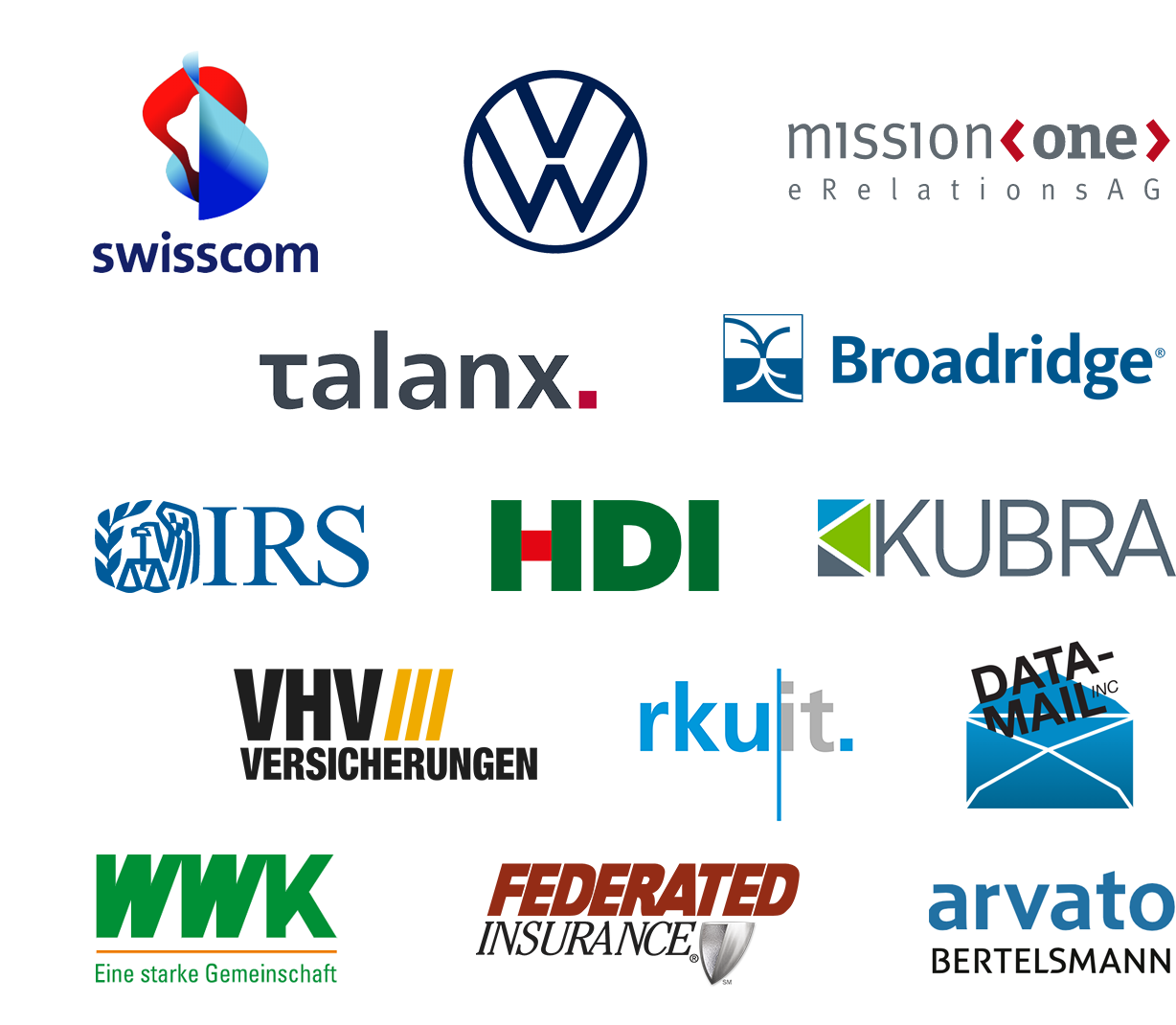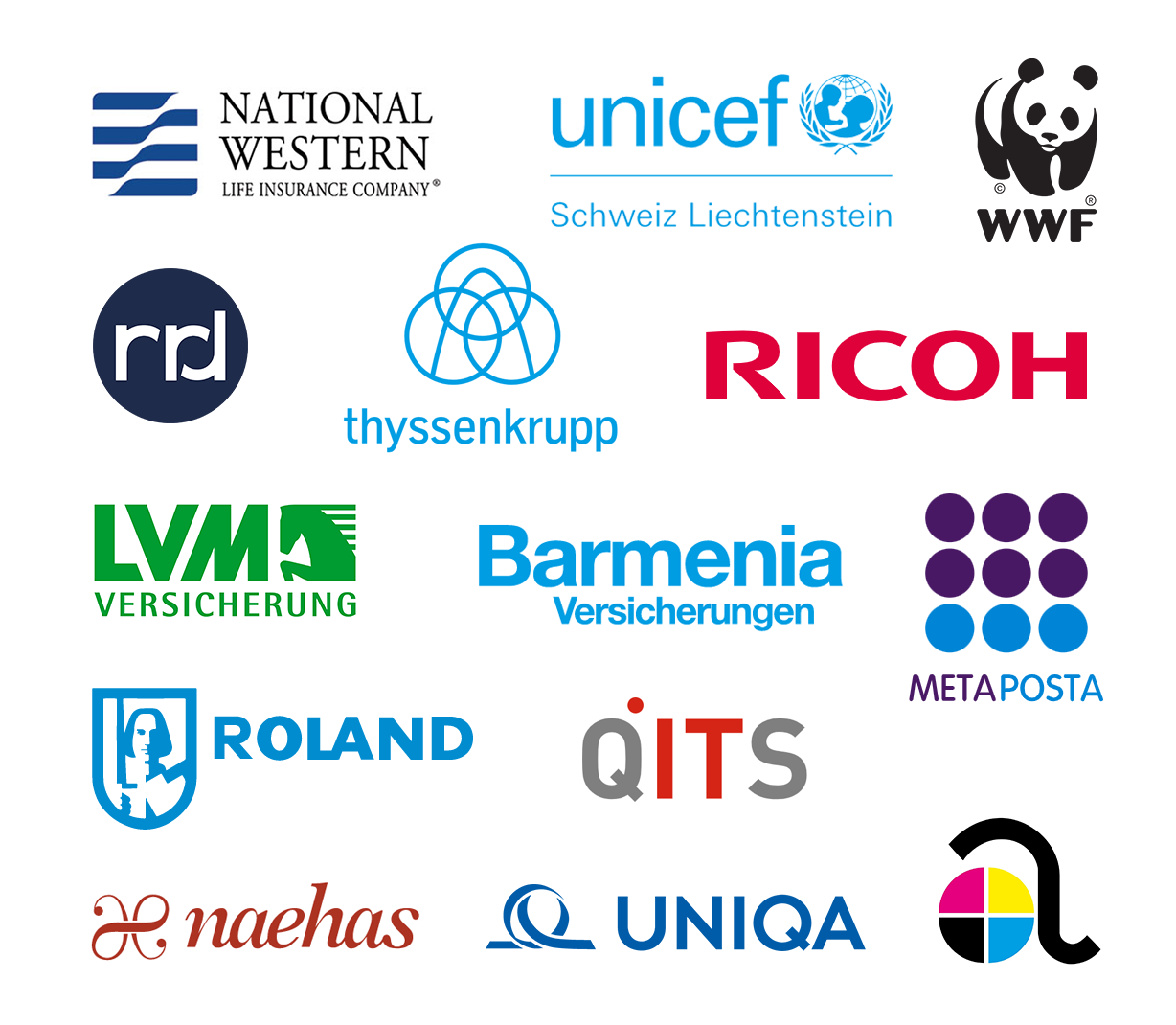References
Think Globally, Act Locally
Worldwide, more than 1,500 companies, organizations and authorities of almost every size and industry use Compart's software to automate their customer communication processes, increase brand value and build trust, while at the same time, conserving IT resources. The wide range of topics and international projects in the area of customer communication management is reflected in Compart's long list of satisfied customers. With over 30 years of software development and innovation - Compart successfully drives complex projects using innovate technologies and leveraging Open Standards thanks to profound industry expertise. See for yourself!
Compart Solutions Are Flexible
More than 1,500 customers in nearly 50 countries
rely on Compart, including...
We Connect People, Companies and Systems.
Software Solutions for Automated Omnichannel Communication.
Compart's scalable, platform-independent, cloud-ready and easy-to-integrate solutions and components cover the entire document and customer communication life cycle – from input processing and data harmonization to the creation, conversion, modification and bundling of documents into optimized omnichannel output on every digital and analog communication channel available today.
Join us in shaping the future of your communications!
Are You Planning a Project?
Take advantage of our experience. Innovative solutions for 30 years.

API service for the creation of transaction documents
Do you need a dedicated API service for creating order confirmations, shipping notifications, invoices, receipts, customer service communications, marketing and other transactional documents - for any format and any output channel? Compart offers granular, high-performance and rapidly deployable API services for document creation and for other selected processes within customer communication, which can be distributed, managed and scaled as Docker and via Kubernetes.
DocBridge Solutions from Compart support API documents through:
- Personalization: With the rise of e-commerce, customers expect personalized and relevant communication from companies. However, it can be challenging for online commerce companies to personalize their customer communication documents at scale.
- Information overload: Customers receive a lot of information from online commerce companies, and it can be overwhelming to keep track of everything. This can lead to missed messages and frustration.
- Delivery and accessibility: Online commerce companies need to ensure that their customer communication documents are delivered to customers in a timely and accessible manner. This includes ensuring that documents are available on different devices and that customers can access them easily.
- Compliance: Online commerce companies need to comply with various regulations and laws related to customer communication, including privacy laws and regulations related to refunds and returns.
- Security: Online commerce companies need to ensure that customer communication documents are secure and protected from data breaches and cyber attacks.

Delivering powerful and accessible multichannel communications
Digitization is driving utilities to adapt their structures and processes in document processing to the increasing needs of consumers and business partners by means of document automation software. Compart helps Utilities redefine CX strategy and build customer engagement platforms that produce personalized, relevant and timely customer communications in the form of bills, invoices, payment reminders, service notices, orders, outage notifications, regulatory notices, energy usage reports and rebate or incentive details.
DocBridge Solutions from Compart support Utilities through:
- Managing complexity: Utility bills and invoices can be complex and difficult for customers to understand, leading to confusion and frustration. Simplifying these documents can improve customer satisfaction.
- Improving accuracy: Utility bills must be accurate and reflect the customer's actual usage. Errors can lead to disputes and customer dissatisfaction.
- Timeliness: Utility bills and outage notifications must be timely and delivered in a timely manner. Late or delayed communications can lead to customer frustration and dissatisfaction.
- Personalization: Utility bills and other documents can benefit from personalization based on the customer's unique needs and preferences. Utility organizations should consider ways to personalize these communications to improve customer satisfaction.
- Accessibility: Utility organizations must ensure that customer communication documents are accessible to all customers, including those with disabilities. This may require providing alternative formats or accommodations.
- Regulatory compliance: Utility organizations must comply with a range of regulations related to customer communication documents, including requirements related to content, format, and delivery. Failure to comply with these regulations can lead to penalties and fines.

Conversion of paper notices to digital format
The executive order on transforming federal customer experience and service delivery to rebuild trust in government highlights the need for reforming customer communications in government. It emphasizes the importance of providing efficient, effective, and transparent services to the public. The government must focus on creating a customer-centric culture that prioritizes the needs and expectations of the citizens. Reforming CX strategy and customer engagement platforms will help to build trust and confidence in government services. Personalized, relevant and timely communications improve transparency and accountability, while simultaneously, reducing the likelihood of errors and miscommunications. It can also help to improve the public's perception of government and its services.
Improving accessibility and personalization in communications is a major opportunity for any government body. Tax forms, notices, licenses & permits, social services forms, announcements, judicial forms & processes, election forms, public records requests and immigration forms are just a few areas of opportunity. By prioritizing the needs and expectations of citizens, the governments can create a customer-centric culture that delivers efficient, effective, and transparent services to the public.
DocBridge Solutions from Compart support transforming government communications through:
- Compliance: Governmental organizations must adhere to strict legal and regulatory requirements when creating and managing documents. This includes requirements for document retention, accessibility, and privacy.
- Security: Governmental organizations deal with sensitive information, such as personal data, financial information, and national security information. Ensuring the security of this information is critical to protect both individuals and the government.
- Complexity: Governmental documents can be complex and lengthy, making them difficult for individuals to understand and complete accurately. This can result in errors, delays, and frustration.
Inefficiency: Paper-based processes for managing government documents can be inefficient and time-consuming, leading to delays in processing and delivery. - Accessibility: Governmental organizations must ensure that their documents are accessible to all individuals, including those with disabilities. This can require additional resources and processes to ensure compliance with accessibility regulations.
- Transparency: Governmental organizations must ensure that their documents are transparent and publicly available, enabling citizens to access and understand government operations and services.

Automated processing & various data sources
The insurance industry is undergoing a radical digital transformation. Today's customer expects personalized, relevant and timely communications. They expect responses to be fast and in their preferred channel. Large volumes of inbound communications need to be managed from various sources and in various formats, while regulations are strict and vary widely throughout different jurisdictions. DocBridge solutions from Compart can help streamline document creation and deliver the below benefits to complex documents such as policies, claim forms, premium notices, renewal notices, endorsements, explanation of benefits (EOB), underwriting documents and more.
DocBridge solutions from Compart help deliver:
- Personalization: With modern CCM practices, insurance companies can create personalized communications that cater to the specific needs of each customer. By utilizing data and analytics, insurers can better understand their customers' preferences and behaviors, and create targeted and relevant communications that increase engagement and loyalty.
- Compliance: Insurance companies are subject to strict regulatory requirements and must adhere to guidelines for communication and document retention. Modern CCM practices enable insurers to automate compliance workflows and ensure that they are meeting regulatory requirements, which helps to mitigate risks and avoid penalties.
- Operational Efficiency: CCM automation streamlines the entire customer communications process, from content creation and management to distribution and archiving. This results in improved operational efficiency and reduces the need for manual processes, which saves time and reduces costs.
- Customer Experience: Providing a positive customer experience is essential for insurers to retain customers and attract new ones. Modern CCM practices allow insurers to deliver timely, relevant, and personalized communications across multiple channels, which improves the overall customer experience and strengthens the customer relationship.

Document automation to drive communication across all channels
Operating within a highly regulated environment with intense competition, banks and financial institutions face the challenge of meeting customer demands for prompt and proficient communication across all channels. However, managing different systems and formats for essential documents such as account statements, loan documents, credit reports, investment reports, policies or planning tools can hinder effective communication. This is where Compart solutions come in, providing a centralized and standardized approach to customer engagement platforms. Our solutions enable on-the-fly conversion of documents, preparing them for seamless delivery across all output channels.
Does your organization have plans to improve any of these topics as it relates to CCM Finance?
- Compliance: Financial services companies are subject to various regulations and laws that govern their operations, including the way they communicate with customers. Ensuring that all customer communication documents are compliant with these regulations can be challenging, especially when the regulations are subject to change.
- Data Security: Customer communication documents often contain sensitive personal and financial information, making it crucial for financial services companies to implement strict data security measures to prevent unauthorized access or data breaches.
- Complexity: Financial products and services can be complex, and the language used in customer communication documents can be difficult for customers to understand. This can lead to confusion and misunderstandings that can result in disputes or even litigation.
- Inefficiency: Financial services companies must process a large volume of customer communication documents, which can be time-consuming and prone to errors. Manual processing can be inefficient, leading to delays in communication and processing requests.
- Inconsistent Customer Experience: Inconsistent or unclear communication can lead to a poor customer experience. Financial services companies must ensure that their customer communication docum

Mastering enormous volume, emerging technologies and evolving customer demands
Print service providers have to deal with it all; direct mail, marketing collateral, invoices/ billing statements, financial documents, catalogs, training material, specialized documents and more. This is a daunting task, not to mention managing the shift from print to digital delivery often creates a significant challenge for organizations in customer communication solutions. Efficiently processing high-volume print jobs with varying data formats and ensuring a seamless transition to digital channels is critical. This requires reliable printstream conversion and document analysis to accurately calculate costs and optimize existing print infrastructure while meeting the demands of digital channels. As the volume of personalized correspondence continues to grow and the structure of documents becomes more complex, the risk of producing incorrect or incomplete documents also increases. Therefore, it is essential to adopt modern CXM platforms, print management software, and document compliance technologies to ensure accurate and timely communication across all channels for a comprehensive communication solution.
DocBridge solutions from Compart help solve for:
- Data quality and accuracy: PSPs may receive customer data in various formats, and data quality and accuracy can be a challenge. Incomplete or inaccurate data can result in errors in customer communications, such as incorrect addresses or misspelled names.
- Compliance and regulatory issues: Depending on the industry, PSPs may need to comply with specific regulations related to customer communication documents. For example, financial documents may need to comply with SEC regulations, and healthcare documents may need to comply with HIPAA regulations.
- Design and formatting challenges: PSPs need to ensure that customer communication documents are well-designed, easy to read, and formatted correctly. This can be a challenge, especially when dealing with large volumes of data and complex document structures.
- Data security and privacy: PSPs must ensure that customer data is secure and protected from unauthorized access or theft.
- Cost management: PSPs need to manage costs effectively to remain competitive. This can be a challenge, especially when dealing with complex or high-volume document production. One particular area that is key to cost management in PSP’s is Postage optimization.
- End-to-end visibility: Real-time monitoring, analysis and optimization of the entire document production process

Automated document creation and processing to drive supply-chains
Digitization is forcing logistics companies and operations management teams to adapt their CXM processes in several ways. First, it has increased the speed and complexity of information exchange, requiring companies to implement more efficient and streamlined communication solutions to manage the large volumes of data involved in supply chain operations. This includes implementing real-time tracking and monitoring of shipments, as well as more sophisticated inventory management systems. Secondly, digitization has led to increased customer expectations for transparency and responsiveness, particularly when it comes to delivery times and shipment status updates. This has led to the need for omnichannel logistics communication between providers and their customers, including the use of automated notifications, online portals, and mobile apps. Finally, the shift towards digital communication channels has also created the need for logistics companies to ensure that their data security and privacy practices are up to date and comply with relevant regulations. This includes implementing secure communication channels for sensitive information, such as financial transactions and personal data, while also replacing unsupported document generation software. Overall, digitization has forced logistics companies and supply-chain organizations to adapt their communication processes to keep pace with the demands of a rapidly evolving industry, while also ensuring that they are able to meet the needs of their customers and comply with regulatory requirements. Docbridge solutions from Compart can help organizations improve efficiency and reduce costs for many logistical document types including shipping manifests and notifications, invoices, receipts, order confirmations, packing lists, delivery confirmations, customer’s documents, return labels and instructions and safety data sheets.
DocBridge solutions from Compart help solve for:
- Complexity: Many logistics documents are transactional documents such as bills of lading, packing slips, and customs forms, can be complex and contain a lot of technical information. This complexity can make it challenging customers to understand and complete the required documentation accurately, while also designing documents efficiently.
- Inefficiency: Traditional paper-based processes for logistics documentation can be inefficient and time-consuming. Manually filling out, processing, and storing paperwork can create delays, errors, and increased costs.
- Compliance: Logistics organizations need to comply with various regulations, such as customs requirements, safety regulations, and environmental regulations. Failure to comply with these regulations can result in penalties, fines, and reputational damage.
- Security: Logistics documents can contain sensitive information, such as financial and personal data. Ensuring the security of this information is critical to protect customers and the logistics organization from potential fraud or data breaches.
- Communication: Logistics organizations need to communicate effectively with customers to ensure that they understand the documentation requirements and can provide the necessary information. Communication breakdowns can lead to delays, errors, and customer dissatisfaction.Complete traceability of the communication history

Communication healthcare - Connecting to everything while safeguarding data
Digitization is transforming CXM in the healthcare industry, and one of the ways it is doing so is by driving healthcare organizations to adapt their customer communication processes. With the rise of digital technologies, patients are increasingly looking for more convenient ways to access healthcare information and communicate with their healthcare providers. This has led to a growing demand for digital channels, such as mobile apps, online portals, and telehealth services, that enable patients to access healthcare information and services from anywhere, at any time. Healthcare organizations are adapting to this shift by implementing modern customer communication solutions that allow them to communicate with patients through a variety of digital channels. For example, they are using document automation to send bills, appointment reminders, deliver test results, explanation of benefits (EOB), medication instructions, and offer telemedicine services. These solutions not only provide patients with greater convenience and accessibility but also enable healthcare organizations to streamline their communication processes and reduce administrative costs. Moreover, digitization is also driving healthcare communications to improve data management and analysis capabilities. By leveraging data analytics tools, they can gain insights into patient behavior, preferences, and needs, and use this information to optimize their customer communication processes. For example, they can use data analytics to personalize their communication with patients, tailor their messages to specific patient needs, and optimize their marketing campaigns. Overall, digitization is pushing healthcare organizations to adopt more modern and data-driven approaches to document design and customer communications, which can ultimately lead to better patient outcomes and a more efficient healthcare system. Healthcare organizations deal with a multitude of systems, data, compliance and processes that make managing customer communications cumbersome, expensive and risky.
DocBridge solutions from Compart help deliver:
- Enhanced patient experience: With modern CCM platforms, healthcare organizations can provide personalized and timely communication to their patients, enhancing the overall patient experience.
- Improved efficiency: Modernizing communication processes can help healthcare organizations streamline their workflows and reduce manual efforts, resulting in improved efficiency and cost savings.
- Compliance: Healthcare organizations deal with sensitive patient information that is subject to strict regulatory requirements. Modern CCM platforms and forms management solutions can help ensure compliance with these regulations, reducing the risk of penalties and other legal issues.
- Integration with other systems: Modern CCM platforms can integrate with other systems used by healthcare organizations, such as electronic medical records and billing systems, allowing for more streamlined communication and data exchange.
- Better data management: With modern CCM platforms, healthcare organizations can better manage their data, including patient information and communication history, allowing for more informed decision-making and improved patient care.
